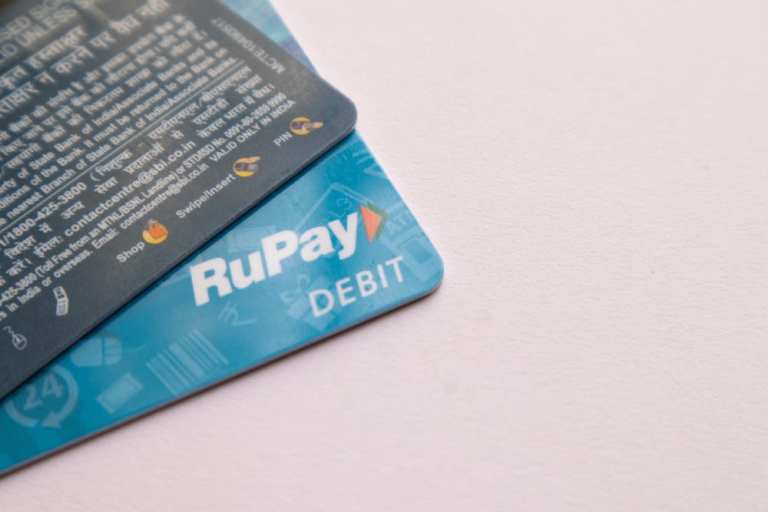
In physics, one of Newton’s Laws state that for every action, there is an equal and opposite reaction. In payments, it can be stated that for every action, there is reaction. Whether it will be equal or opposite remains to be seen.
As the new year takes shape, the latest test in the push and pull of various stakeholders can be found in India. The continuing push by the country’s government may find friction, with debit cards as the epicenter — making the cards, essentially, free for merchants to accept may have repercussions elsewhere in the payments ecosystem, as others shoulder the cost.
Beginning this year, and as tied to the budget for the current fiscal year, the government has eliminated the merchant discount rate (MDR) — the charge for electronic payments levied on merchants by banks as payments are processed. The charges have typically been 12 rupees ($.17 USD) to 15 rupees on transactions of more than 2,000 rupees, and the cap is 60 basis points. For transactions under 2,000 rupees, the costs for the banks have been passed to the Ministry of Electronics and Information Technology.
The stated goal has been to boost digital payments, especially transactions across RuPay cards, which are domestically issued by the National Payments Corporation of India (NPCI). RuPay is a payment network offered by NPCI, Unified Payments Interface (UPI) and Unified Payments Interface Quick Response Code (UPIQRC).
At the same time, as previously reported in this space, the country’s finance ministry has set up a new regulation, mandating that companies with an annual revenue equivalent of more than $7 million must accept debit cards (including RuPay, of course). If these firms do not accept those payments, fines will be assessed — hefty ones, too, to the tune of 5,000 rupees a day.
So, here’s one side of the equation: a government mandate to accept debit cards, making it cheaper for consumers to make payments using that form factor, and free for merchants to accept the cards in the first place. There’s a financial incentive for merchants to accept those payments, too, in the form of avoiding fines. Add those developments together, and it may mean that the effort is to make RuPay the de facto (digital) card for retail payments.
Digital transactions, of course, continue to gain traction in India, having touched 1 billion transactions. UPI has garnered roughly one-third of transaction volume, and nearly one-third of transaction value.
To be sure, the adoption of debit cards has been significant in the wake of the 2016 demonetization, where, in the latest figures, there are more than 840 million debit cards in the field, so to speak. Of that tally, as many as 500 million of the cards are RuPay cards.
Anticipating The Reaction
The opposite reaction, and the other side of the equation? We may see it come as banks and other financial services players seek to recoup suddenly lost revenue. The MDR, after all, represents revenue for issuing banks, the networks themselves (including the trio of RuPay, Visa and Mastercard) and merchant acquirers.
For the POS firms, the impact may be especially noticeable (and soon), as IBS Intelligence cited stats showing the merchant discount rate accounting for as much as 80 percent to 90 percent of revenues for terminal providers. One might imagine the ripple effect impacting top lines, and perhaps even (down the line) the innovation of tech firms dependent on India’s payments ecosystem.
Call it a push and pull over debit. The banks that issue RuPay cards might even opt for other cards, such as Visa and Mastercard.
“We will have to bear the cost of processing these card swipes, while there will be no money to be made per transaction. Banks will have to rethink their strategy on giving out RuPay cards,” said an unidentified senior banker of a private sector lender to Moneycontrol earlier this week.
In another observation, according to Reuters, back when the no-fee debit proposals surfaced in the middle of 2019, T.R. Ramachandran, group country manager for India and South Asia at Visa, said, “I find the logic [of the plan to ban the merchant discount rate] a bit fallacious because the cost is not free. … I am a firm believer in low economics, but no economics student can believe in no economics.”
Might Consumers Lose?
Every economist will say that there is no such thing as a free lunch. When it comes to platforms, like payments, someone must always pay. Free to merchants often comes with not-so-free to consumers, in some way. It’s a lesson we have lived with in the U.S. since the aftermath of the Durbin Amendment, which capped debit interchange at $.24.
Less revenue to the banks for debit cards use meant less revenue to fund debit rewards, which all but went away. This also made the cost of maintaining the checking accounts more expensive for the banks. For some consumers, that meant their once-free checking accounts were no longer free.
Merchants, presented with this reduction in fees, largely pocketed that savings. There is scant evidence that interchange fee caps resulted in cheaper prices at merchants, or reduced prices that were perceptible to the consumer.
It’s possible that, in the drive to lower the cost of debit to the advantage RuPay at a national level, the consumers might lose out — pointing toward another law, not of physics, but one that figures mightily in business and life: the law of unintended consequences.